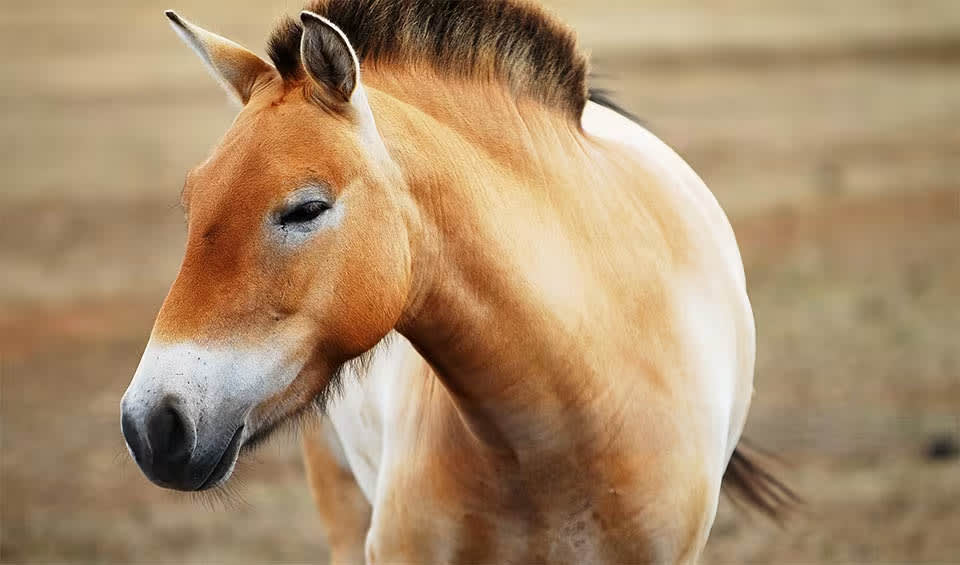As a subspecies of the now-extinct Equus ferus, Przewalski’s horse represents a direct link to the ancient world of wild horses, a living testament to the rich biodiversity of our planet. However, the aftermath of World War II marked a turning point for these majestic creatures, as their numbers began to decline dramatically, pushing them to the brink of extinction.
Characteristically smaller and stockier than their domesticated counterparts, Przewalski’s horses boast coats that range in color from beige to a striking reddish-brown, mirroring the earthy hues of their natural habitats. These animals are well-suited to life in steppe and semi-desert environments, areas characterized by their sparse vegetation and harsh climate conditions. Within these challenging landscapes, Przewalski’s horses formed social groups known as harems, a structure that played a crucial role in their survival, offering both social cohesion and protection.
The year 1969 marked a somber milestone in the history of Przewalski’s horse, as it was the last time these animals were observed in the wild, leading to the conclusion that the last native wild populations had vanished. This disappearance signaled a critical juncture for conservationists and sparked a global effort to save Przewalski’s horse from permanent extinction. In an ambitious attempt to preserve their genetic lineage, wild-caught individuals were captured and bred in captivity. These captive breeding programs became the cornerstone of a larger conservation strategy aimed at reintroducing Przewalski’s horse back into its natural habitat.
The early 21st century witnessed the fruits of these laborious conservation efforts as reintroduced populations of Przewalski’s horses began to roam the steppes of Mongolia once again. This success story represents a beacon of hope in the field of conservation, showcasing the potential for reversing the fortunes of critically endangered species through dedicated intervention and management. However, the journey towards ensuring the long-term survival of Przewalski’s horse is far from over.
Distribution
 China
China Kazakhstan
Kazakhstan Official estimate
Official estimate
 Mongolia
Mongolia Russia
Russia Official estimate
Official estimate
 Ukraine
Ukraine Official estimate
Official estimate
Did you know?
- Przewalski’s horse’s ancestors were never domesticated.
- They are named after the Russian geographer and explorer Nikolay Przhevalsky.
- Przewalski’s and domestic horses have very few genetic differences.
- At the ‘Endangered Wild Equid Workshop,’ Ulaanbataar (2010), the following threats were identified for the reintroduced population: Loss of population due to stochastic events (i.e., severe winter);Limited habitat and resources (pasture and water);Domestic horses (hybridization, disease, social stress);Lack of information, appreciation/awareness, lack of knowledge and exploitation of resources.
Anything we've missed?
Help us improve this page by suggesting edits. Glory never dies!
Suggest an editGet to know me
Terrestrial / Aquatic
Altricial / Precocial
Polygamous / Monogamous
Dimorphic (size) / Monomorphic
Active: Diurnal / Nocturnal
Social behavior: Solitary / Pack / Herd
Diet: Carnivore / Herbivore / Omnivore / Piscivorous / Insectivore
Migratory: Yes / No
Domesticated: Yes / No
Dangerous: Yes / No




